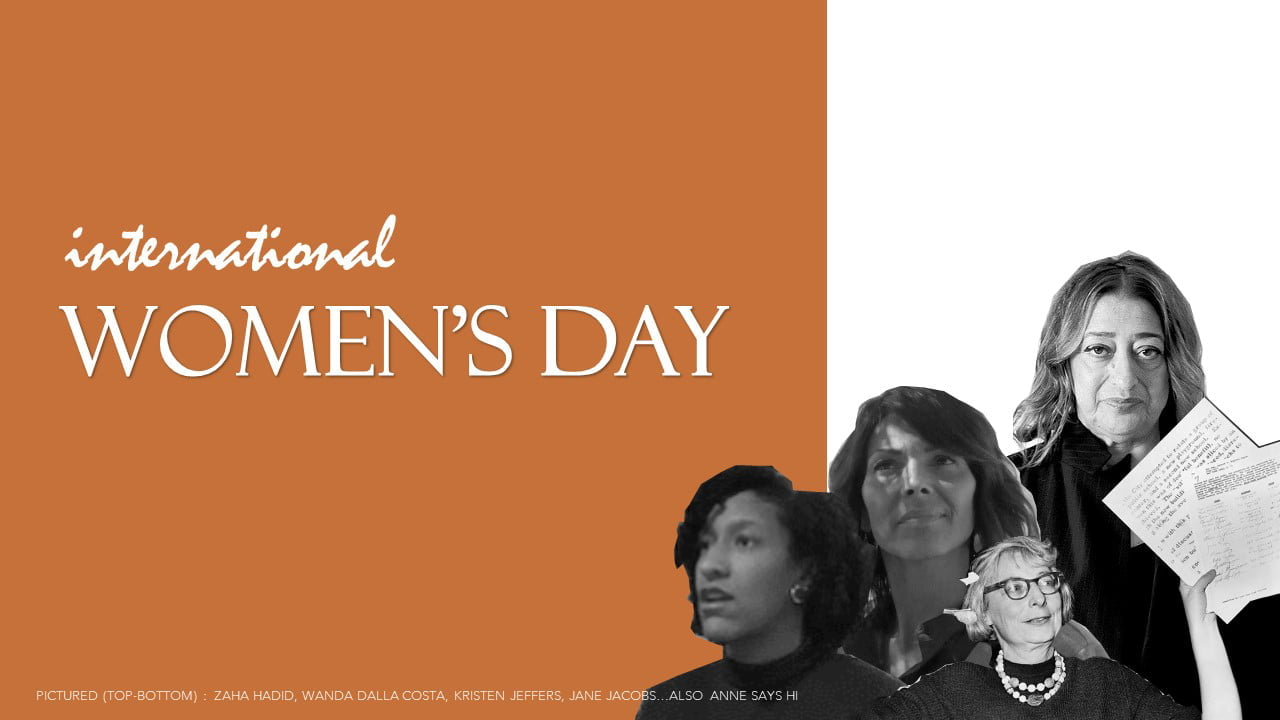
On March 8th, Urban Strategies hosted an informal discussion on International Women’s Day as part of our ‘Friday Thing’ programming.
A diverse group of Planners, Designers, Principals, and Interns gathered around a table as we watched a slideshow about inspirational women in the field to kickstart the discussion.
The organizers, Anne Benaroya and Sarania Dabee, asked insightful guiding questions to the team, highlighting the impacts of gender norms and the experiences of women and gender-diverse people within the planning, design, and development industry.
Strategists shared how gender prejudices and stereotypes affected their careers and day-to-day lives. The discussion ranged from funny stories to key moments in our lives where we gained deeper understanding of the ways gender biases continue to be perpetuated today, even in children. We also discussed the intersections of different prejudices with gender, noting that experiences can be different for people of colour, and that women and gender diverse people who are also racialized or marginalized in other ways have unique perspectives and different experiences with regards to progress.
After the discussion, the group watched a video entitled “Towards a Feminist City: Just Transition Approach” presented by Ms. Sneha Visakha, doctoral candidate at the Department of Anthropology at Brandeis University. She spoke about definitions of a Feminist City and how to design urban spaces to promote well-being through ‘care infrastructure’ – as caregiving still often falls within the societal expectation of women’s role in their families.
We reflected on the ways that we can design cities that are more sensitive to the value of ‘care infrastructure’, including nursing homes, childcare, and education facilities and how these spaces form a network of care. Finally, we discussed the importance of creating welcoming recreational and public spaces for everyone, including women.
Women and gender diverse people who are also racialized or marginalized in other ways have unique perspectives and different experiences with regards to progress
By considering the impacts of urban space design on women and gender-diverse people, urban planners and designers can create safer and happier cities through:
- Designing ‘care infrastructure’ as a network of programs that promote the well-being of the community.
- Locating ‘care infrastructure’ close to residential homes for convenience and safety.
- Prioritizing street frontage and active edges for public spaces to create welcoming and safe spaces for everyone.
Happy International Women’s Day to everyone!
Article written by Kinna Mistry, Urban Design Intern